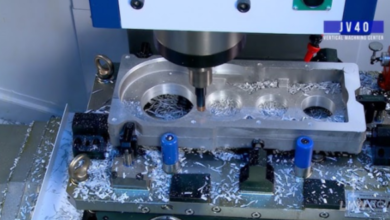Dark Side of Digital Manipulation: How Face Morphing Threatens Identity

Technological advancements have taken the world by storm, bringing convenience and innovation and streamlining many life experiences. Face morphing, an advanced and sophisticated image manipulation technique has completely transformed the way we interact with digital images and media, offering potential applications in entertainment & media, forensic investigation, biomedical imaging, and face aging. However, malicious actors with unethical intentions with deceitful motives are exploiting the technology for self-serving interests. The exploitation of online face morphing is evident in identity theft, impersonation attacks, deepfakes, fraud, and cyberbullying.
Online Face Morphing: Potential for Good & Evil
Online face morphing is a digital image manipulation technology that blends two or more images of the targeted individuals to create a new face. The newly generated identity significantly shows an uncanny resemblance to the fed images. The advanced technology integrates sophisticated algorithms to generate sharp and convincing output. Every technology has positive and negative use cases, and so does AI face morph.
Positive Use Cases
- Face morphs are largely used in entertainment and media to create special effects for animated content and films, constructing pleasing and appealing content.
- The technology is also used in biomedical images enabling researchers to observe, understand, and evaluate biological changes that are taking place over time.
- AI face morph finds potential applications in locating missing or dead persons, helping law enforcement to quickly resolve investigation cases.
- Most crucially, the technology is used by anti-fraud and anti-money laundering (AML) bodies to effectively fight the rising threats of financial crimes & fraudulent activities.
Negative Use Cases
Undoubtedly, AI face morph presents incredible advancements, however, the negative use cases predominantly outweigh the positive applications.
- Super realistic face morph AI of the targeted individuals is created to defame the person by creating embarrassing manipulative content, tormenting the societal image and credibility.
- Deepfakes, synthetic media posing serious threats to the integrity of online identity, employ face morphing technology to generate highly realistic and humanistic images or videos.
- Highly realistic AI face morphs are often created to impersonate potential persons, asking people to share confidential information or send big money.
How Face Morphing is a Threat to Digital Identities?
Cybercriminals exploit the facial images of the targeted persons to generate highly convincing identities. These synthetic identities are used to dodge biometric authentication systems and gain unauthorized access to the services or privileges, potentially increasing the risks of fraudulent activities. AI face morphs are sophisticated enough to evade biometric authentication systems and are highly concerning for institutions or government bodies largely relying on biometric verification technology for safety and security.
With technological advancements, cybercriminals have become sophisticated enough to use face morph for self-interests.
- AI face morph is often used to create new identities. The fabricated identities are used to conduct malicious activities like opening bank accounts under the disguise of others and getting illegitimate access to restricted services or privileges.
- Morphed images are often used to impersonate individuals you are familiar with like a close friend, the company’s top executive, or a bank manager. Phishing emails or fake calls are made to divulge individuals into revealing their confidential information or sending money by telling fabricated stories or using social engineering tactics.
- Often the motive behind the generation of face morphing AI is cyberbullying or extortion. Malicious actors with bad intentions generate highly realistic images of the targeted images to take revenge, blackmail for some gains, or damage public perception.
- Deepfakes are the biggest threat in today’s modern world, which involves creating highly realistic images or videos of a person, making it challenging to discern between real and fake identities. Even advanced biometric authentication systems fail to flag fabricated identities and allow these fake personas into services or systems.
- Not only on online platforms, morphed images have spread their wings to ID documents. Studies reveal that fraudsters use morphed faces to generate fake ID documents like driver’s licenses or passports, achieving illegitimate access into the system to conduct nefarious activities.
Importance of Awareness & Vigilance
To fight against the rising threats of online face verification and stay ahead of criminals’ wrongful plots, individuals must stay vigilant and cautious while interacting online. Nothing is impossible in this world, you can make anything possible by putting effort in the right ways. Individuals operating online and using social platforms are recommended to reduce their digital footprints and keep accounts private. It’s highly crucial to validate the authenticity of the information you through or any source asking you to share your confidential information.
Alongside awareness at individual levels, businesses must also implement robust security measures to secure their integrity against face morphing AI. It’s paramount to integrate liveness checks and multi-modal biometrics into authentication solutions, actively flagging anomalies or inconsistencies. Furthermore, educating employees about the threats and potential consequences raises a sense of responsibility, enabling them to detect inconsistencies in emails or attachments.
Governments and regulatory bodies can play a critical role in curbing the threats of face morphs by developing stringent regulations governing the use and misuse of the technology and announcing legal penalties for non-compliance.






